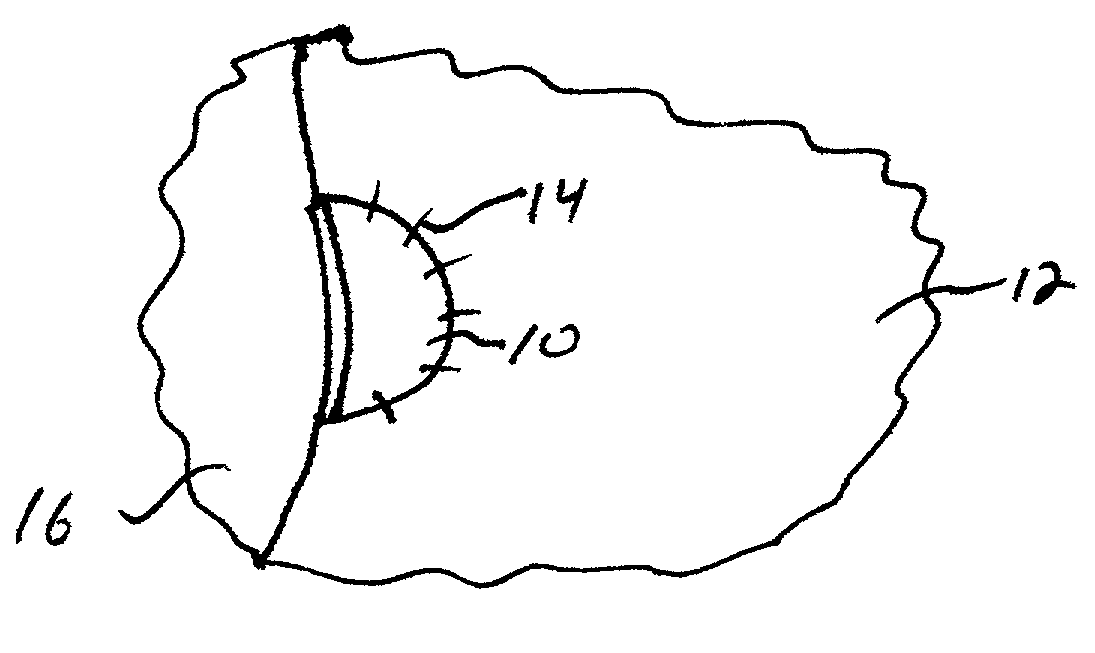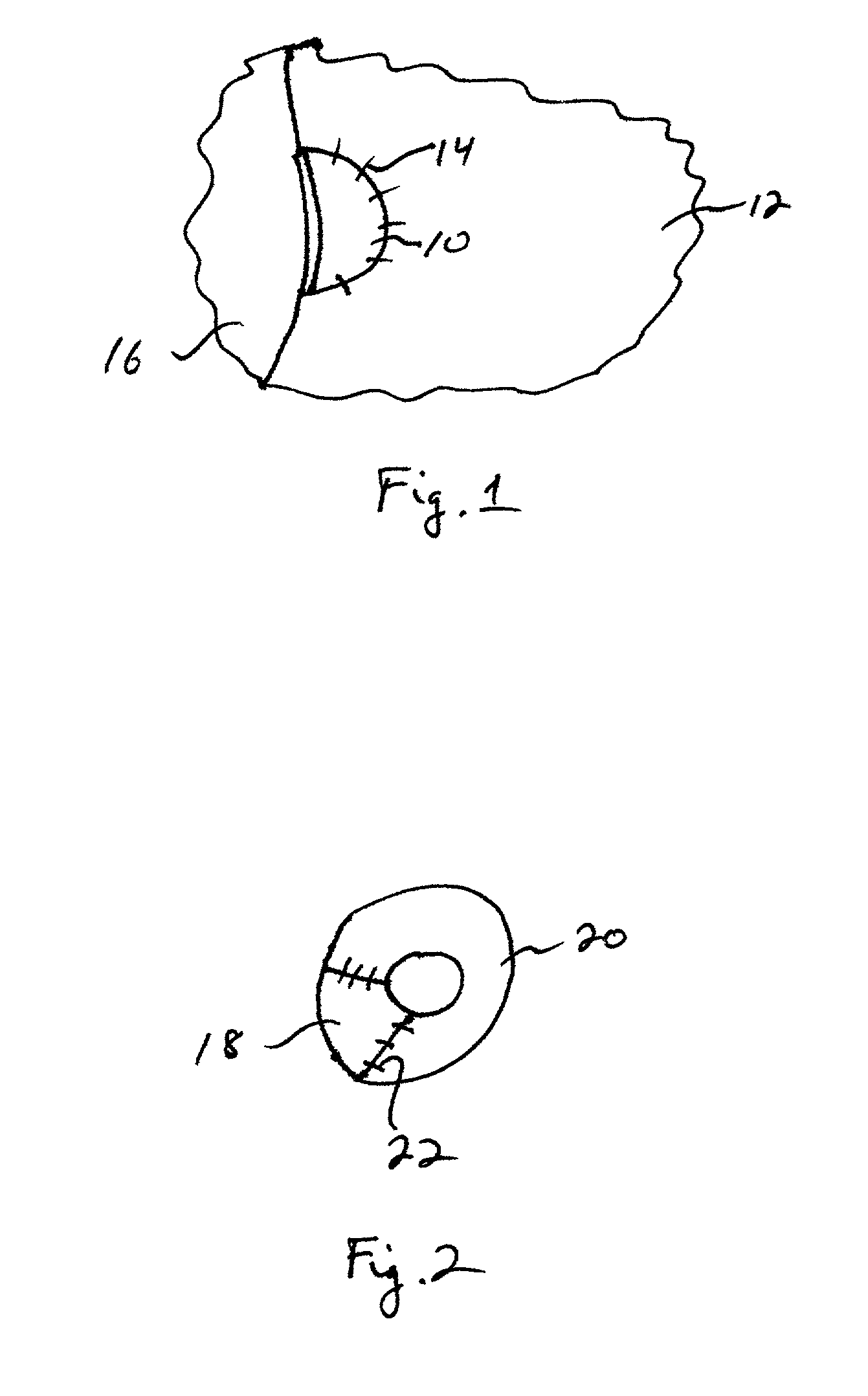Resorbable extracellular matrix for reconstruction of cartilage
a cartilage tissue and extracellular matrix technology, applied in the direction of macromolecular non-active ingredients, cell culture supports/coatings, peptide/protein ingredients, etc., can solve the problems of meniscus damage, damage to the cartilage between the joints, and damage to the one or more vertebral discs of back injuries
- Summary
- Abstract
- Description
- Claims
- Application Information
AI Technical Summary
Benefits of technology
Problems solved by technology
Method used
Image
Examples
example 1
[0078]Frozen cartilage from freshly slaughtered pigs was steeped in cold water, thoroughly washed through and mechanically purified from flesh residues, bones and hard pieces. Subsequently, the material was washed for 30 minutes under flowing water.
[0079]Subsequently, the material was ground three times in a homogenizer. The optical particle size at the end of size reduction was about 8 mm.
[0080]The cartilage pieces were dewatered by washing 4 times with acetone, each time for 8 hours. The cartilage was then defatted by extraction 4 times with n-hexane. Each treatment lasted at least 8 hours. The ratio of hexane to cartilage was 1:10.
[0081]After defatting, the cartilage was swelled in drinking water. The ratio of water:material was 10:1. The treatment time was 24 hours.
[0082]The material was then treated with NaOH (5% by weight) whereby the ratio of cartilage to liquid was 1:4 and the treatment time was 32 hours. During the treatment, the pieces of cartilage were well stirred. Subse...
example 2
[0086]The extract resulting from alkaline treatment in Example 1 contained glycosaminoglycan, alkali, denatured proteins and salts. The extract was firstly neutralised with HCl, the pH value after neutralisation being 6. The extract was then treated with a filter aid, namely kieselguhr, which had the effect of removing the denatured proteins. 0.5 weight percent of kieselguhr was introduced into the extract and removed by filtration together with the denatured protein.
[0087]The supernatant was then submitted to ultrafiltration using a membrane having a molecular weight cut off at about 10000 daltons. In this way, salts were removed to leave purified glycosaminoglycan.
[0088]The glycosaminoglycan solution so obtained was admixed with collagen material from above to provide a collagen II matrix containing glycosaminoglycan.
example 3
(1) Determination of Hexosamine and Amino Acid Residues in Collagen Sponges and Fleeces
[0089]Each sample, exactly weighed (about 10 mg) was hydrolised in 10 ml of 3M or 6M HCl at 1.05° C. for 15 or 20 hours under purified nitrogen in a sealed tube. After cooling the tube in a refrigerator and opening the tube, the contents were transferred to a 25 ml long neck flask and dried at 40° C. in a vacuum-rotation dryer (Rotavapor RE120, Büchi, Switzerland) under water jet vacuum. After dissolving the residue in 5 ml water, the residue was again dried under water jet vacuum. Subsequently, the residue was taken up in 5 ml loading buffer (0.2M relative to Na+) at pH 2.2. For determination of the glucosamine and galactosamine values, after previous dilution of an aliquot with loading buffer (1+10) 150 μl of the sample hydrolysed in 3M HCl was injected into the cartouche of an amino acid analyser (AlphaPlus, type 4151, Pharmacia-LKB, Freiburg) and evaluated by comparison with a standard with th...
PUM
| Property | Measurement | Unit |
|---|---|---|
| pore size | aaaaa | aaaaa |
| pore size | aaaaa | aaaaa |
| thickness | aaaaa | aaaaa |
Abstract
Description
Claims
Application Information
 Login to View More
Login to View More - R&D
- Intellectual Property
- Life Sciences
- Materials
- Tech Scout
- Unparalleled Data Quality
- Higher Quality Content
- 60% Fewer Hallucinations
Browse by: Latest US Patents, China's latest patents, Technical Efficacy Thesaurus, Application Domain, Technology Topic, Popular Technical Reports.
© 2025 PatSnap. All rights reserved.Legal|Privacy policy|Modern Slavery Act Transparency Statement|Sitemap|About US| Contact US: help@patsnap.com


